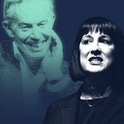Gross Domestic Product is up again, according to the Office for National Statistics. Economic output in the UK has increased for five consecutive quarters which, says the ONS, is “the longest period of continuous growth since the downturn.” Britain’s economy is now 0.6 per cent below its pre-Lehman Brothers peak. Growth is 3.1 per cent higher now than it was at the beginning of last year.
This is good news for the government. The Labour party is finding it harder to put a negative spin on what looks to be an upward economic trajectory. In a statement, Ed Balls, the Shadow Chancellor, commented that: “David Cameron and George Osborne want to tell people the cost-of-living crisis is over, but millions of hardworking people are still feeling no recovery at all.” Strengthening productivity and an upward movement in average wages may soon remove even this line of criticism.
So far, so political. But there lurks behind this rosy economic picture a more significant matter, a question that has been asked in economic circles for months now: if the recovery is under way, when will the Bank of England raise interest rates? Senior City figures suspect that Osborne wants a rate rise before the next election. Inflation is falling at present, but only slightly, and it is expected to start climbing later in the year. If growth of the sort announced today continues until next May, Mark Carney, the Governor of the Bank, may go for a rate increase. If so, this would allow the Chancellor to go to the ballot box saying that he has achieved not only economic growth, but also normality.
For a long time, the UK economy has been in an abnormal state. The Quantitative Easing programme saddled the Bank of England with £375bn of UK government debt, which it still holds. Interest rates are effectively at zero and for some periods, real interest rates have even become negative. The Treasury would like nothing more than to start back on the route to normality; a small rate rise of 0.25 per cent would act as a strong signal that regular economic conditions are returning.
But putting up interest rates would be fraught with risk, both political and economic. Certainly a rise would benefit savers, a constituency that George Osborne made clear at the last Budget was close to his heart. Encouraging people to save, not least for their retirement, is a good thing.
It’s the housing market where the danger lurks. A shortage of housing stock combined with generous mortgage lending by high street banks—encouraged by the government—has driven up house prices at an alarming pace, in London at double digit speeds. Homebuyers have bought houses at high prices and taken out big mortgages to do so, at the bottom of the interest rate cycle. The horror scenario would be that interest rate rises cause the housing market to grind to a halt and then slip backwards.
The situation is all the more worrying in that there is no accepted view of what is going on in the housing market. Government spokesmen insist that there is no housing bubble and that house prices are still below their pre-crisis peak. If that view of the housing market is correct, then there would be little danger in a modest rate rise. But cutting sharply across that view is the colossal house price inflation of the last year—17.7 per cent in London—and high levels across the South East and almost all of England. Tinkering with markets that are in or approaching bubble territory can be very dangerous. Bubbles have a nasty habit of occasionally going “pop”. Falling house prices, mortgage holders unable to make monthly payments, banks holding large amounts of bad debt: not pretty.
Noticing the gathering heat in the housing market, the regulators have tightened lending rules so that mortgage applicants will have to give more detail about their earnings. They will also have to explain how they would pay their mortgage if interest rates were to rise by as much as 7 per cent. These changes were introduced by the Financial Policy Committee—a unit within the Bank of England. The Bank, therefore, sees the need to tighten credit conditions.
Economic growth is bringing Britain’s policymakers ever closer to a decision point. The coming election could well turn on whether and by how much the Governor of the Bank of England puts up interest rates—and whether he gets it right.
ONS Figures: Will Mark Carney hold his nerve?
Buoyant growth statistics could be the cue for an interest rate rise, but what would that mean for the housing market?
April 29, 2014













